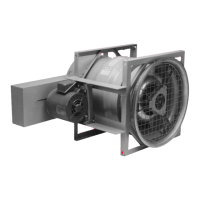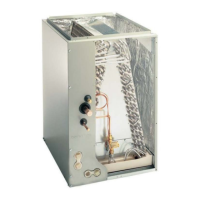UV-PRC001-EN 31
Standalone Configuration
As a standalone controller, the
TUC is ideally suited for fix-on-fail
replacement of units with old
pneumatic controllers, or in situa-
tions where a BAS will be added at
a later date. Once power is applied
to the controller, it will automati-
cally start up and run based upon
the setpoint on the local zone sen-
sor. An individual time clock can
be added to the unit for local
scheduling.
TUC vs. ZN520
(What’s the Difference?)
When selecting an ICS system, It is
often difficult to differentiate
which system will better suit the
comfort requirement within the
building. There are very few differ-
ences in the TUC and the ZN520
controller. And yet, these differ-
ences should be evaluated prior to
selecting the best-suited ICS sys-
tem design.
Master Slave
A single zone sensor may be used
to control multiple TUC controllers
in a stand alone situation. The TUC
controllers must be wired in paral-
lel to respond properly to the zone
sensor’s setpoint. See Figure 29
for a TUC master slave set-up.
With the master slave set-up, the
common zone sensor cannot
provide a set point to all the units.
Controls
TUC
Figure 29: TUC master slave set-up
Therefore, a unit mounted thermostat should be used on each unit to provide an adjustable set point for prop-
er operation.
Note: When establishing the master slave sensor connection, it is critical to mention that the jumper (W1) on
all TUC controllers wired in parallel to the master controller must be cut. If at a later time, a BAS is designed
into the control system, a reinstallation of the jumper will be required.

